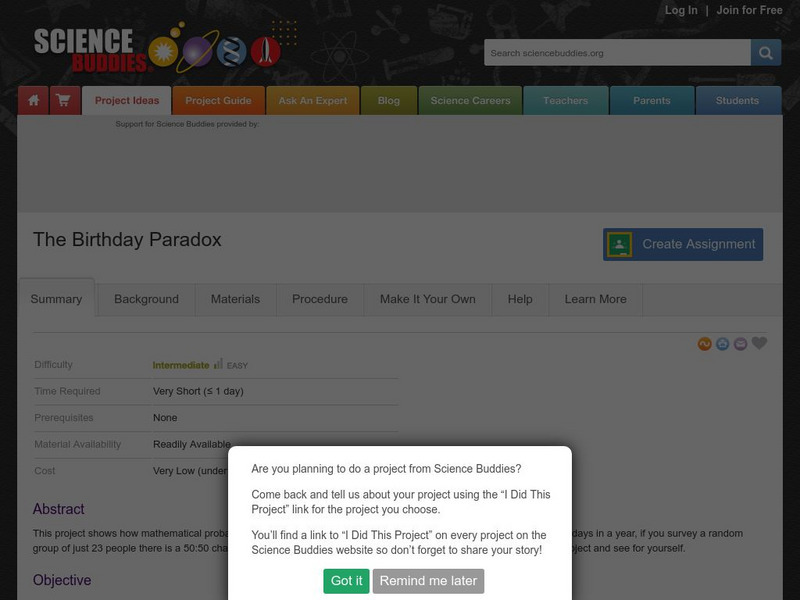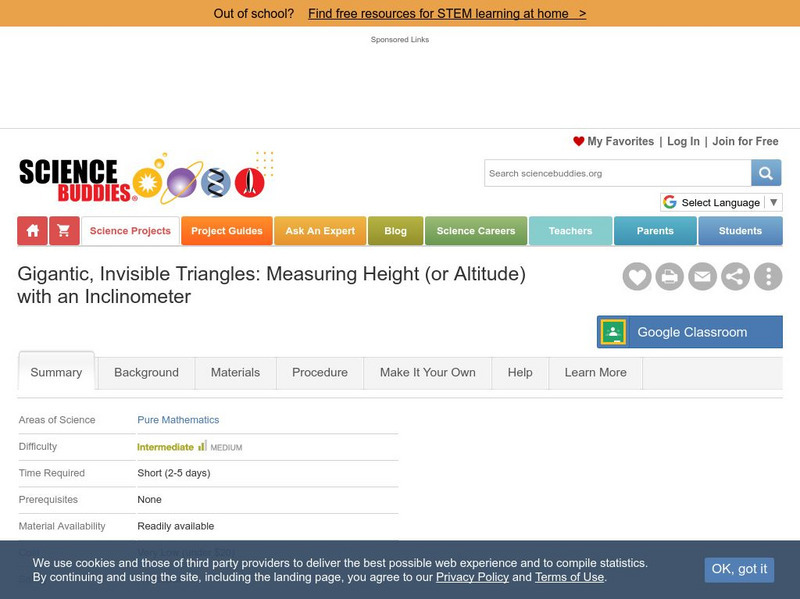Hi, what do you want to do?
California Education Partners
Four Square Wars
Obviously, four is the perfect number when you're playing Four Square. Scholars first use multiplication and division to solve a set of problems on the number of balls needed, the number of games, and the number of players required for a...
California Education Partners
Theater Field Trip
Here's an assessment task that's better than watching a show. Young mathematicians solve word problems involving multiplication and division with equal groups. They must find the total number of attendees on a trip to a theater based on...
Education Bureau of Hong Kong
Evaluating Casual Claims
Responsible decision making relies on the ability to a recognize, analyze, and evaluate claims. The worksheets and activities in this 32-page packet teach learners how to distinguish among opinions, reasoned arguments, facts, and logical...
Curated OER
Worksheet 25- Spring 1996
In this math learning exercise, students find the values of the vectors. They also they prove that v and w are both orthogonal and find two nonparallel vectors.
Curated OER
The Power of Algebra
First graders explore patterns. They look for patterns in number problems and use algebra as a means of solving general problems. Students devise a strategy to solve the number problem.
Curated OER
History / Introduction of Pythagorean Theorem
Learners explore Pythagoras and the history behind his theorem. They work together to solve a proof that is embedded in the lesson.
Illustrative Mathematics
How Many Solutions?
Determining the number of solutions is an important stepping stone to higher math. In this case, the resource asks algebra pupils to find a second linear equation for a certain solution of a system. When one is asked for a linear...
Curated OER
Caesar Ciphers: An Introduction to Cryptography
Young scholars brainstorm and discuss the concept of cryptography, the science of secrets in today's world and then focus on a system for sending secret messages used by Julius Caesar. They make a Caesar wheel assessing encrypting and...
Curated OER
Interpreting pH
In this pH worksheet, students read about pH and the concentration of ions in solutions that are acidic and basic. They answer four questions about pH and determine the concentration of hydronium ions and the pH given concentrations of...
Curated OER
Maxima and Minima Problems
Students calculate the maxima and minima of quadratic equations. In this calculus lesson, students apply the derivatives by finding the maxima and minima using real life application. They solve optimization using the derivative.
Curated OER
Navigating by the Numbers
Students observe how math is important in navigation and engineering. They study how surveyors use math and science to calcute, count, measure, label, and indicate distances on a map. They estimate specific distances.
Curated OER
Kids Conserve? Water Preserved
Sixth graders review the steps of the water cycle. Individually, they calculate the amount of water they use in a day and identify ways they can conserve. As a class, they discuss how conserving water today helps future generations and...
Curated OER
Kids Conserve? Water Preserved
Students study conservation and how cities obtain their water. In this water lesson students view a PowerPoint presentation and draw a picture of the water cycle.
Curated OER
Marie Curie and the Naming of a Unit
In this radioactivity worksheet, students read about scientists who contributed to the discovery of radioactivity and radioactive elements. They read about Marie Curie and her contributions to science and the unit the "curie" which was...
Curated OER
Using Density to Identify Metals
Young scholars learn how to measure the density of metals. In this density of metals lesson plan, students measure the density of various metals in order to determine what metals were substituted in a king's crown, scepter, breast plate...
Curated OER
Pair 'Em Up!
Third graders verify the validity of Punnett squares. They simulate a real-world situation by drawing chromosomes from a paper bag and track the data.
Curated OER
Constructing a Spectroscope
Students construct a simple spectroscope. They observe the emission spectrum produce by a source of light.
Curated OER
Lake Crossing II
Students complete the following problem by using logic: Three couples, the Smiths, the Jones and the Browns wanted to go to the Brown's yacht that was moored a little way out in the lake. There was a dinghy to take them to the yacht but...
Science Buddies
Science Buddies: The Birthday Paradox
This project shows how mathematical probability sometimes contradicts our intuition. Despite the fact that there are 365 days in a year, if you survey a random group of just 23 people there is a 50:50 chance that two of them will have...
Science Buddies
Science Buddies: Divide and Conquer: Proving Pick's Theorem for Lattice Polygons
If you like to play Tetris then you might like this project. You'll learn something interesting about the mathematics of complex shapes.
Science Buddies
Science Buddies: Exploring Fractals
Although fractal images can be intriguingly complex, fractals are more than just pretty pictures. In this project, you'll explore the mathematical properties of the famous Mandelbrot and Julia sets. You'll learn about how these images...
Science Buddies
Science Buddies: M&m Geometry
Geometry is the study of how to use math to describe and investigate different points, lines and shapes. The way that a shape is described in geometry is with a formula, which is simply a mathematical way to calculate different...
Science Buddies
Science Buddies: Gigantic Triangles: Measuring Altitude (Inclinometer)
If you've ever wondered how tall that bridge is, or how high your kite was, then this could be a good project for you. You'll learn how you can use the mathematics of right triangles to measure the height of an object with two...
Texas Instruments
Texas Instruments: Composing Music Mathematically
This activity is designed to motivate and challenge first year algebra students through a fun introduction to advanced mathematical concepts. It also offers extensions for upper grade level students. Students will recognize relationships...




























